Here's a minimal reproducible example:
library(ggplot2)
mydata <- data.frame(condition = c(rep("One",40), rep("Two",40)),
participant = rep(1:40,2),
observation = c(rnorm(40,2,1), rnorm(40,0,1)))
#my.plot <- ggplot(mydata, aes(x=condition, y=observation, group=participant)) +
my.plot <- ggplot(mydata, aes(x=condition, y=observation)) +
geom_point(size=3) +
geom_line(size=1, alpha=0.5) +
xlab('condition') +
ylab('Observation')
dataDensity <- mydata %>%
group_by(condition) %>%
do(data.frame(loc = density(.$observation)$x,
dens = density(.$observation)$y,
participant=1))
dataDensity$dens <- ifelse(dataDensity$condition == "One", .9+(dataDensity$dens * -1), 2.1+(dataDensity$dens))
my.plot + geom_polygon(data = dataDensity, aes(dens, loc, fill = condition))
This gives me the following plot:

Which is close to what I want, but not quite. I actually want to group each corresponding pair of points between conditions "One" and "Two". So when I add the grouping variable (as I do with the line commented out in the snippet above) I get this problem:
Which is interesting, but not what I'm after.
I had to add the hack/workaround participant=1 to prevent the error message:
Error in FUN(X[[i]], ...) : object 'participant' not found
How can I combine the scattered points with a grouping variable but keep the split violins independent?
(NOTE: the vertical line in the first plot is just because I have the geom_line)

